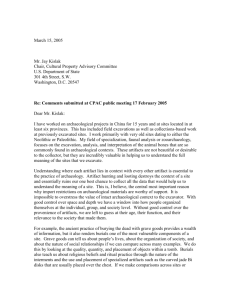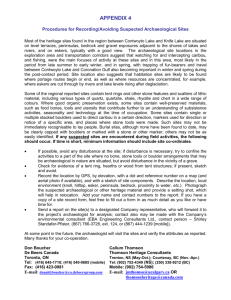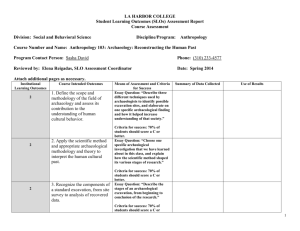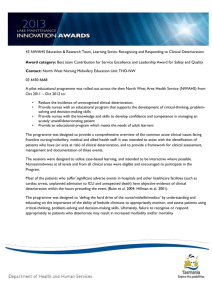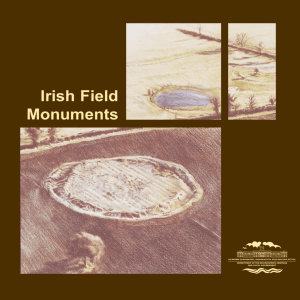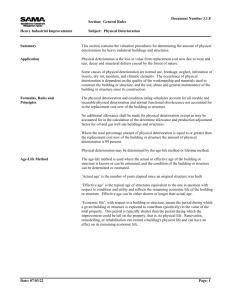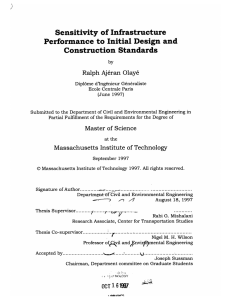9 ABSTRACT TEMPLATE
advertisement
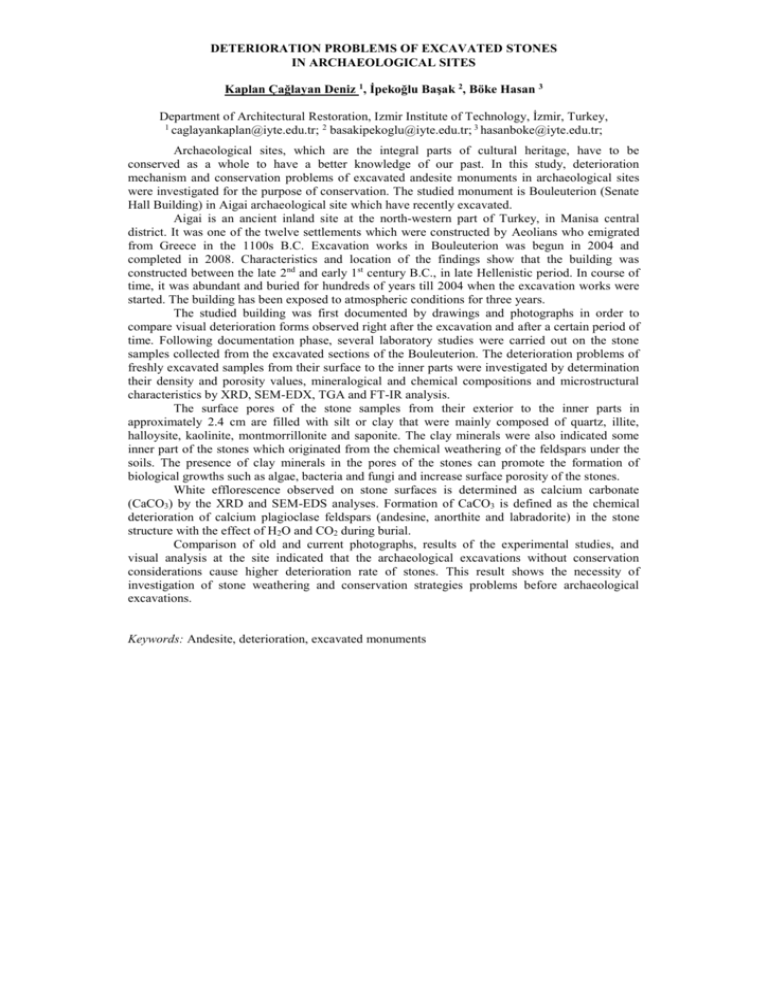
DETERIORATION PROBLEMS OF EXCAVATED STONES IN ARCHAEOLOGICAL SITES Kaplan Çağlayan Deniz 1, İpekoğlu Başak 2, Böke Hasan 3 Department of Architectural Restoration, Izmir Institute of Technology, İzmir, Turkey, 1 caglayankaplan@iyte.edu.tr; 2 basakipekoglu@iyte.edu.tr; 3 hasanboke@iyte.edu.tr; Archaeological sites, which are the integral parts of cultural heritage, have to be conserved as a whole to have a better knowledge of our past. In this study, deterioration mechanism and conservation problems of excavated andesite monuments in archaeological sites were investigated for the purpose of conservation. The studied monument is Bouleuterion (Senate Hall Building) in Aigai archaeological site which have recently excavated. Aigai is an ancient inland site at the north-western part of Turkey, in Manisa central district. It was one of the twelve settlements which were constructed by Aeolians who emigrated from Greece in the 1100s B.C. Excavation works in Bouleuterion was begun in 2004 and completed in 2008. Characteristics and location of the findings show that the building was constructed between the late 2nd and early 1st century B.C., in late Hellenistic period. In course of time, it was abundant and buried for hundreds of years till 2004 when the excavation works were started. The building has been exposed to atmospheric conditions for three years. The studied building was first documented by drawings and photographs in order to compare visual deterioration forms observed right after the excavation and after a certain period of time. Following documentation phase, several laboratory studies were carried out on the stone samples collected from the excavated sections of the Bouleuterion. The deterioration problems of freshly excavated samples from their surface to the inner parts were investigated by determination their density and porosity values, mineralogical and chemical compositions and microstructural characteristics by XRD, SEM-EDX, TGA and FT-IR analysis. The surface pores of the stone samples from their exterior to the inner parts in approximately 2.4 cm are filled with silt or clay that were mainly composed of quartz, illite, halloysite, kaolinite, montmorrillonite and saponite. The clay minerals were also indicated some inner part of the stones which originated from the chemical weathering of the feldspars under the soils. The presence of clay minerals in the pores of the stones can promote the formation of biological growths such as algae, bacteria and fungi and increase surface porosity of the stones. White efflorescence observed on stone surfaces is determined as calcium carbonate (CaCO3) by the XRD and SEM-EDS analyses. Formation of CaCO3 is defined as the chemical deterioration of calcium plagioclase feldspars (andesine, anorthite and labradorite) in the stone structure with the effect of H2O and CO2 during burial. Comparison of old and current photographs, results of the experimental studies, and visual analysis at the site indicated that the archaeological excavations without conservation considerations cause higher deterioration rate of stones. This result shows the necessity of investigation of stone weathering and conservation strategies problems before archaeological excavations. Keywords: Andesite, deterioration, excavated monuments
